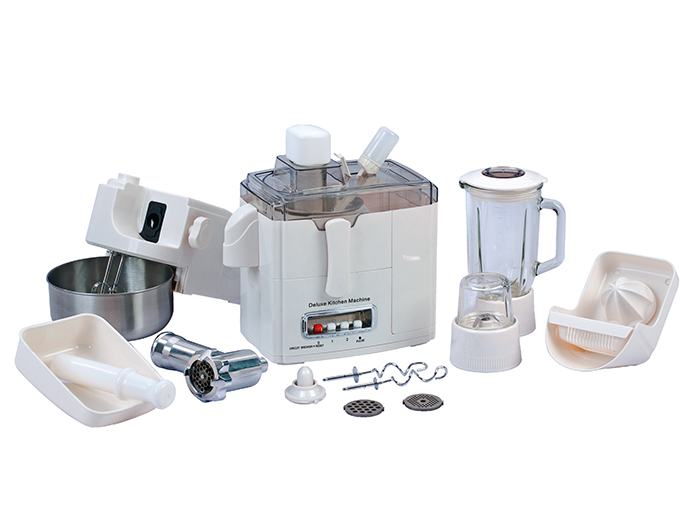In the field of lighting applications, we have been certain that LED light source is already the mainstream light source for lighting applications, but on the other hand, OLED (Organic Light Emitting Diode) technology has begun to take action in the field of lighting. Recently, OLCA (OLED Lighting Alliance) was established in Taiwan, mainly in tandem with Taiwan's research and development energy, and related upstream and downstream operators, hoping to make a preemptive layout in the global lighting market in a one-stop way.
Liu Junting, director of the Institute of Electro-Optics at the Taiwan Industrial Research Institute, said that OLEDs and LEDs will develop towards a complementary relationship between the two. The reason is that OLED itself is very close to the sunlight in nature in terms of spectrum, so the objects we see It will be very natural. Coupled with power saving features, it is very helpful for the development of OLED in the field of lighting. He also said that the spectrum of the tungsten filament bulbs in the past is also very close to the sunlight, but it is slowly replaced by LED lighting because of the excessive power consumption.
Liu Junting further pointed out that OLED is suitable for many fields, such as museums, galleries, light source lighting for wedding photos, cosmetics counters, supermarkets and schoolchildren's desk lamps, and international first-line automakers such as BMW, Brunswick and Audi. Started to integrate OLED lighting into the body. In fact, OLED lighting has been talked about in Europe and the United States for about 15 years, but why has it grown more recently? The reason is that OLEDs were initially introduced into display applications, which effectively reduced production costs and lowered the threshold for high-cost entry. There is a possibility to implement lighting applications. Therefore, the development of OLED lighting and the development of LED light sources can be said to be completely consistent, starting with the screen display and starting to switch to lighting applications.
However, Liu Junting also stressed that the lighting application market and other terminal applications are quite different in terms of industrial characteristics, that is, lighting applications have a long development time in terms of technology penetration rate. There are two reasons for this. One is the localized building regulations, and the second is the diversity of indoor buildings. In order to further cooperate, this development has been created. However, in the long run, OLED lighting is still quite developed. It is estimated that the ratio of LED to OLED lighting will be about 3:1 in 2020. It is expected that the OLED lighting market will take off in 2017.
Liu Junting, director of the Institute of Electro-Optics at the Taiwan Industrial Research Institute, said that OLEDs and LEDs will develop towards a complementary relationship between the two. The reason is that OLED itself is very close to the sunlight in nature in terms of spectrum, so the objects we see It will be very natural. Coupled with power saving features, it is very helpful for the development of OLED in the field of lighting. He also said that the spectrum of the tungsten filament bulbs in the past is also very close to the sunlight, but it is slowly replaced by LED lighting because of the excessive power consumption.
Liu Junting further pointed out that OLED is suitable for many fields, such as museums, galleries, light source lighting for wedding photos, cosmetics counters, supermarkets and schoolchildren's desk lamps, and international first-line automakers such as BMW, Brunswick and Audi. Started to integrate OLED lighting into the body. In fact, OLED lighting has been talked about in Europe and the United States for about 15 years, but why has it grown more recently? The reason is that OLEDs were initially introduced into display applications, which effectively reduced production costs and lowered the threshold for high-cost entry. There is a possibility to implement lighting applications. Therefore, the development of OLED lighting and the development of LED light sources can be said to be completely consistent, starting with the screen display and starting to switch to lighting applications.
However, Liu Junting also stressed that the lighting application market and other terminal applications are quite different in terms of industrial characteristics, that is, lighting applications have a long development time in terms of technology penetration rate. There are two reasons for this. One is the localized building regulations, and the second is the diversity of indoor buildings. In order to further cooperate, this development has been created. However, in the long run, OLED lighting is still quite developed. It is estimated that the ratio of LED to OLED lighting will be about 3:1 in 2020. It is expected that the OLED lighting market will take off in 2017.

Food Processor 10 In 1 is one of the most popular model among our Food Processors. They include almost all the features that can meet the needs of family life.
Description for Food Processor 10 In 1
400W
1.0L glass jar blender, grinder, juicer, citrus, juicer, mixer, meat mincer
2 speeds with pulse
shink bag packing
Color box: 66*24.5*44.5cm
40'HQ: 970pcs

Food Processor 10 In 1
Food Processor 7 In 1,Food Processor Blender Juicer,Electric Stainless Steel Food Processor,Electric Vegetable Food Processor
Flying Electronic Co., Ltd , https://www.flyingelectronic.com